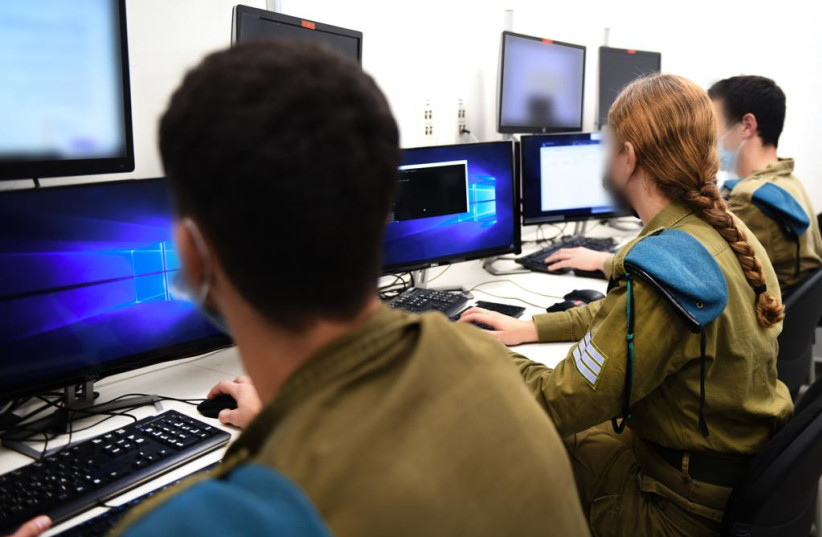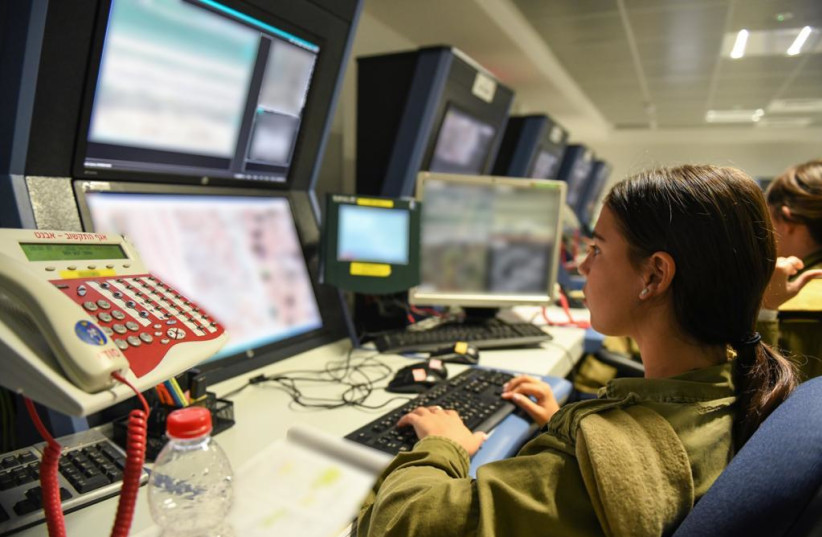The IDF on Thursday pushed back against accusations in recent years that it has become an apparatus comprised of two separate, but not equal, armies – one for the wealthier and one for the less wealthy.
Its basic message was that adolescent draftees from wealthier backgrounds are serving in combat units at the same or even higher rates as those from less wealthy backgrounds.
It was clear that the IDF was trying to fight back against a string of articles and data showing that draftees from wealthier backgrounds are filling up elite technological units such as IDF Intelligence Unit 8200 and the C4i and Cyber Defense Directorate, but not the less wealthy.
Put brazenly, this led to allegations that rich Israelis were sending poorer Israelis to risk their lives and fight wars on their behalf.

This criticism took on an even more consequential tone after the recent incident in which a soldier from the Kfir Brigade illegally beat up a left-wing activist while saying that he and incoming National Security Minister Itamar Ben-Gvir would make the law what they wanted now.
When IDF Chief of Staff Lt.-Gen. Aviv Kohavi slammed the soldier, and the soldier’s commander sentenced him to 10 days of prison, leading to a backlash from politicians on the Right, many started to ask whether a gulf has developed between elitist rich Ashkenazi commanders and poorer, ethnic minority soldiers in fighting units such as the Kfir Brigade.
OC IDF Human Resources Directorate Maj.-Gen. Yaniv Asur said: “The fighting spirit must be maintained as an ethos that guides military service, an ethos that we were inculcated with and with which we must educate future generations. Over 80% of those who have a combat-soldier profile end up serving in combat units.”
“Those who are drafted to serve in combat units and to other special fighting units are the select young people of society, its best face, high-quality adolescents with values that engender a deep sense of service and commitment, and they come from the full range of Israeli society,” he said.
Asur addresses the rich/poor divide
Directly addressing the rich/poor divide, Asur said: “Eighty-one percent of men with a combat profile and with high psycho-technical scores of 70 or more choose to serve in battle units. Seventy-two percent of them serve in land-based infantry units.”
That is another way of the IDF saying rich people are serving in combat units as much or more than people from poorer backgrounds, and that they are serving in the less glorious combat units in high numbers.
The point about the less glorious units, such as the Golani Brigade in the North, the Givati Brigade in the South and the Kfir Brigade in central Israel and the West Bank, is important to the IDF to counter criticism that even when wealthier draftees serve in combat units, they snatch up all of the more elite positions in special forces such as the General Staff Reconnaissance Unit and the Oz Brigade.
In fact, the IDF also said special commando units generally have about 10% of their recruits from wealthier families, and the most elite land unit, the General Staff Reconnaissance Unit, has about 5% of its recruits from wealthier families.
“Recently, there have been claims that we have built two separate armies within the IDF,” Asur said. “According to the data that we analyzed, we can see that those coming from the higher socioeconomic sector are joining in higher percentages than the general population. They have high levels of motivation to serve in combat units, which leads to them being placed in combat units.”
“The model of the nation’s army guarantees the IDF a competitive advantage in quality and capability that helps actualize its goals and at the same time increases cohesion within Israeli society,” he said.
However, this IDF data only addresses part of the issue critics have complained about: whether the rich serve in the harder and less glorious infantry units along with those who have less money.

Even if the IDF says the answer is that the wealthier do serve in those units along with the less wealthy, it still needs to respond to the criticism that less wealthy recruits are not making it into elite technological units in equal numbers.
Regarding this, IDF sources admit that closing the gap has not yet been accomplished and will take a long time.
Whether that means five years, 10 years or even longer is anyone’s guess, because IDF sources say the problem is deep inequalities in the education system, where wealthier communities offer more and better classes in physics and computers, and poorer communities have much less to offer in these areas.
If in the case of combat, the IDF believes it can take people from different backgrounds and turn them into essentially equally useful and physically fit fighters, this simply is not true for technological units.
Someone who has had years of specialized computer training and programming exposure is in a different world than someone who the IDF would need to try to train from scratch, even if that person from a less wealthy family has a high IQ.
Despite acknowledging the realities of the inequality gap in this area, the IDF has already in recent years initiated special programs to try to reach out to talented students in the periphery at younger ages and help expose them to technology.
In addition, the IDF has started hosting special recruiting days for elite technological units in peripheral areas such as Beersheba and Tiberias, along with the events it has always hosted in the Tel Aviv and the central corridors.
IDF sources said hundreds of current technological unit personnel from less wealthy backgrounds attained their positions because of these relatively new efforts.
That is nowhere near to closing the gap, with personnel overall in these units reaching into the thousands, but the IDF said it shows it is doing its part to try to improve things and hopes the Education Ministry will do its part in areas beyond the control of the military.
“We are exerting great efforts to integrate more young people from the periphery into technological units,” Asur said. “We are moving forward with a range of educational programs based on the principles that it is critical to give an equal opportunity to all who enter through our gates.”
In the area of integrating haredim (ultra-Orthodox) into the IDF, Asur made some comments but was less specific.
“We need to move forward with haredim serving in the IDF and to build bridges between the haredi community and the IDF,” he said.
IDF sources said around 1,100 haredim are joining the IDF per year in a steady number over recent years (it jumped to that number around a decade ago) and probably comprise about 9% of haredim who are eligible to be drafted.
Also, they said they are trying to figure out creative ways for haredim to serve in the IDF by performing specific kinds of tasks, sometimes in technological areas and sometimes within the framework of a Shlav Bet (Track B). The Track B draft service model is a model used for many olim (immigrants) who move to Israel in their early to mid-20s, is shorter and often leads to different service jobs and special considerations.
A 2014 law pushed through by Yair Lapid, at the time part of a short-lived government with then-prime minister Benjamin Netanyahu, had planned to require about 5,000 haredim to serve in the IDF per year by 2018, but that law was nixed at the behest of the haredi parties by a new government in 2015.
The issue of Haredim not serving in the military in percentages matching the general population is expected to return to the High Court of Justice which has declared multiple government policies on the issue unconstitutional due to unequal exemptions for Haredim.
Eighty-five percent of non-haredi draftable Jewish and Druze men currently join the IDF, while 69% of draftable Jewish women join the IDF, according to the military.
